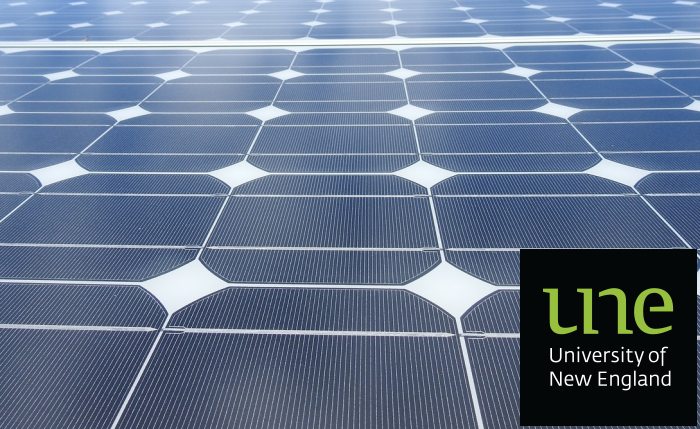
Solar panel image : 3444753
The University of New England in Armidale, New South Wales has received the green light for construction of a solar farm that will also incorporate battery storage.
The Armidale Express reports the go-ahead was granted after unanimous approval at a Joint Regional Planning Panel meeting held yesterday.
According to a Council Assessment Report (PDF), the $14.2 million clean power station will be constructed in two stages.
The first stage involves the development of a solar farm with an approximate capacity of 3.2 MWdc. The second stage will see construction of the remaining section of the solar farm. The capacity of that stage is unclear as the document states it will have ” an approximate capacity of 5.2 GWh”. A gigawatt hour is a measure of energy (not power).
The second stage will also involve the installation of four battery containers, each container having a length of 12 metres and a height of 2.3 metres. The total capacity of the battery storage aspect wasn’t specified in the Council Assessment Report.
A weather station will also be installed at the site to measure solar irradiance, wind, rain and temperature data to assess performance of the solar farm.
The 11-hectare site has been identified site as being “Potential Koala Habitat” and nine koala feed trees will be removed during construction. For each one removed, five will be planted to replace it. Also to be erected is a 2.1 metre high security fence with a 50 centimetre tall scratch barrier to prevent curious koalas from scaling the fence.
“Having access to renewable energy generation will provide cheaper energy and allow UNE to direct the savings realised towards teaching and research,” said a University spokesperson.
The facility will also provide hands-on opportunities for research and teaching in renewable energy topics.
Regarding how much the solar + storage facility will directly contribute to the University’s electricity needs also isn’t clear. When originally announced in 2016, there was no mention of storage and the value of the project was $6.6 million, so the capital investment value has been bumped up by more than double. At that point, the solar farm was to contribute approximately the equivalent of 50% of University of New England’s electricity requirements.
Elsewhere in Armidale, solar energy has also been catching on among households and businesses. In the 2350 postcode (population: 25,339), 1,732 small scale solar power systems are installed, with a collective capacity of 7.25MW.
Other Australian universities using solar power – or soon to – include University of Newcastle, UNSW, Monash, Charles Sturt, University of Southern Queensland and University of Queensland.

 RSS - Posts
RSS - Posts



Speak Your Mind